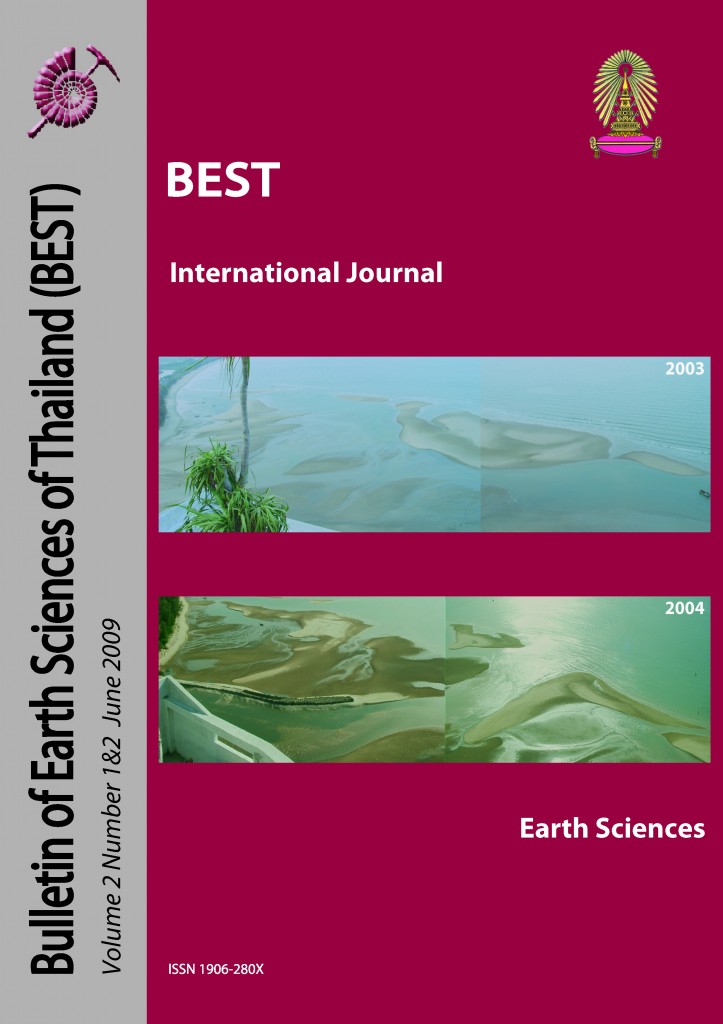Mapping a NEHRP Site Class Using Multi-channel Analysis of Surface Waves (MASW) Method in Southeast Missouri, USA
Main Article Content
Abstract
Multi-channel surface wave seismic data was acquired at 40 pre-selected sites in the Poplar Bluff study area in southeast Missouri. Additionally, cross-hole seismic data were also acquired at two of these sites. The primary goal was to generate the NEHRP (National Earthquake Hazards Reduction Program) soil amplification map for the Poplar Bluff area using the average shear wave velocity values derived from the multi-channel analysis of surface wave (MASW) data. The secondary goal was to evaluate the accuracy of the MASW estimates. The NEHRP map of the study area generated from these data closely matched the surficial geologic map. Areas mapped on the existing surficial geology map as either Mississippi Embayment lowland soils or Ozark alluvial valley soils have weighted average shear-wave velocity values till 30 m depth (Vs(30)) ranging from 182 to 365 m/s, corresponding to NEHRP soil class D. Areas mapped as Ozark upland residual soil, in contrast, have values in the 365 to 762 m/s range, corresponding to NEHRP soil class C.
Article Details

This work is licensed under a Creative Commons Attribution-NonCommercial-NoDerivatives 4.0 International License.
Copyright © 2008 Department of Geology, Faculty of Science, Chulalongkorn University. Parts of an article can be photocopied or reproduced without prior written permission from the author(s), but due acknowledgments should be stated or cited accordingly.
References
Anderson, J.G., Lee, Y., Zeng, Y., and Day, S., 1996, Control of strong motion by the upper 30 meters: Bulletin of the Seismological Society of America, Vol. 86, No. 6, pp. 1749-1759.
ASTM: American Society for testing and Materials, 2003, D4428: Standard test methods for crosshole seismic testing, Annual Book of ASTM Standards Vol. 04.08 Soil and Rock (I).
Borcherdt, R.D., 1994, New developments in estimating site effects on ground motion, Proceedings of Seminar on New Developments in Earthquake Ground Motion Estimation and Implications for Engineering Design Practice, Applied Technology Council 35-1, pp. 101-1– 10-44.
Borcherdt, R., Wentworth, C.M., Janssen, A.; Fumal, T., and Gibbs, J., 1991, Methodology of predictive GIS mapping for special study zones for strong ground shaking in the San Francisco Bay Region, CA. Proceeding of the Fourth International Conference on Seismic Zonation, Vol. 3, pp. 545-552.
Building Seismic Safety Council, 2003, NEHRP Recommended Provisions for Seismic Regulations for New Buildings and Other Structures, Part 1: Provisions, FEMA 368, Federal Emergency Management Agency, Washington, D.C.
Joyner, W.B., Warrick, and Fumal, T., 1981, The effect of quaternary alluvium on strong motion in the Coyote Lake, California, Earthquake of 1979, Bulletin of the Seismological Society of America, Vol. 71, No. 4, pp. 1333-1349.
Park, C.B., Miller, R.D., and Xia, J., 1999, Multichannel analysis of surface wave, Geophysics, 64, pp 800-808.
Tinsley, J.C., and Fumal, T.E., 1985, Mapping quaternary sedimentary deposits for areal variations in shaking response, Evaluating Earthquake Hazards in the Los Angeles Region – An Earth Science Perspective, Ziony, J.I. (Ed.), USGS Prof. Pap. 1360, 101-126.
Will, C.J., Peterson, M., Bryant, W.A., Reichle, M., Saucedo, G.J., Tan, S,, Taylor, G., and Treiman, J., 2000, A siteconditions map for California based on geology and shear-wave velocity: Bulletin of the Seismological Society of America, Vol. 90, no. 6B, pp. S187-S208.


